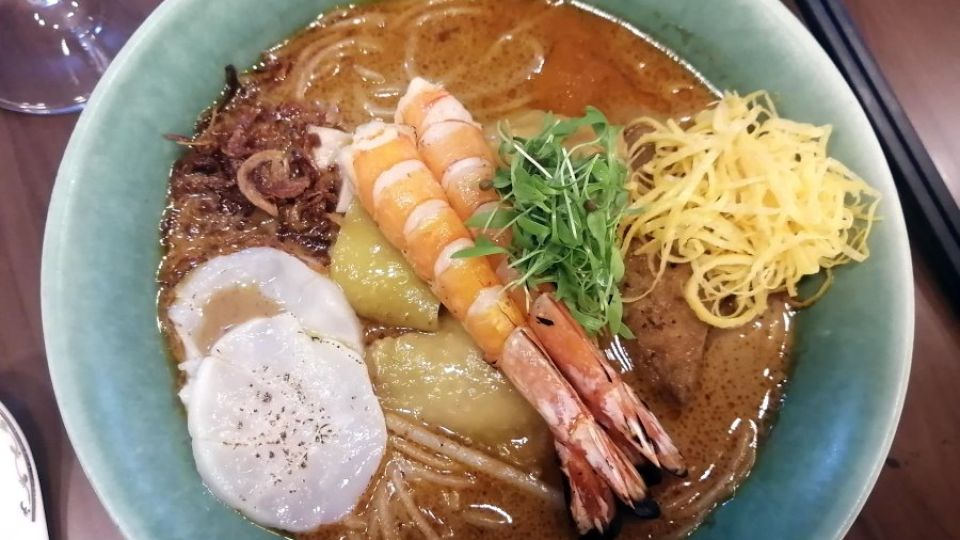BEIJING (ANN/CHINA DAILY) – After years of dedicated development and strategic marketing efforts, Southeast Asian cuisine is now experiencing a rapid growth phase in China. However, experts suggest that there are still untapped niche opportunities waiting to be explored in order to fully harness the sector’s immense potential.
Sarawak, Malaysia-born Jasmine Kho is the founder of MULU, a Beijing-based food and beverage group with various Southeast Asian sub-brands.
In 2012, when she first established MULU Hutong, a Nanyang-French sub-brand in the international metropolis, very few had tasted Malaysian curry and Sarawak laksa – two classic dishes from her hometown.
Now, 11 years on, steady streams of Southeast Asian food fanatics have to make reservations a week in advance to get a taste of Sarawak dishes. During COVID-19, she also established a street food style Southeast Asian sub-brand and a Michelin-recommended Thai sub-brand.
Southeast Asian cuisine entered China in the 1990s and is now in a development spurt.
Guangzhou-based retail service provider Windata said that in 2021 in China, store opening and closing ratios of Thai restaurants – a linchpin representative of Southeast Asian cuisine – surpassed one, which means the pace of Thai restaurant openings was greater than closings.
In terms of geographic location, Southeast Asian food has been quickly penetrating first-tier and “new first-tier” cities, such as Beijing, Guangzhou, Hangzhou and Chengdu, with Vietnamese, Malaysian and Singaporean cuisine ranking among foodies’ favourites, a report from Chinese online service provider Meituan showed.
Meanwhile, according to the report, during this year’s Labour Day holiday, consumption of exotic food and beverages, which includes Southeast Asian cuisine, skyrocketed, with year-on-year growth surpassing 30 per cent.
Specifically, searches for “Thai cuisine” on Meituan during the holiday surged 303 per cent on a yearly basis, ranking first among all exotic cuisine categories.
“Taking advantage of the psychology of consumers seeking novelties, Southeast Asian cuisine has entered the Chinese market successfully.
The development of the Southeast Asian tourism industry afterward has further allowed more and more consumers to know and appreciate the food better,” said Zhu Danpeng, an F&B analyst based in Guangzhou.
“Currently, Southeast Asian restaurants, featuring Thai, Malaysian and Singaporean cuisine, have developed differentiated business positioning strategies, and pay attention to meeting consumers’ social needs with diversified scenarios, and their per capita consumption prices are polarised,” said a report from F&B observer canyin88.com.
“Southeast Asian food is one of my favourites. I often take my family to such restaurants on weekends. We three spend between CNY200 (USD27.4) and as high as CNY2,000 per meal,” said Yuan Xiaochen, a 35-year-old Southeast Asian cuisine fan in Beijing.
Flourishing as the market is, not every Southeast Asian restaurant survived the three-year pandemic and ensuing lockdowns. Thai Flavor, a restaurant chain once the rage in China, shut down all its outlets in Beijing.
Some of its sites in Guangzhou, Guangdong province, were also shuttered. Lotus Thai, which launched its first restaurant in Beijing in 1999, and several more in the capital later on, closed two downtown outlets during the pandemic.
Addison Liew, chef patron of MULU Hutong, said: “The ‘secret’ to us standing still against the challenges all the way through is that we always place taste as the top priority. Once the taste changes, customers are the first to know.”
Team management is another perspective that enterprises may need to consider, Liew said.
“Southeast Asian cuisine consumption in China is full of potential, given the fact that it often has Chinese roots. In terms of taste, it is easily accepted by most Chinese palates. With people’s living standards rising, more people are traveling abroad, especially to Southeast Asia, which is a neighbour of China, and consumers are embracing the diversity of delicious food,” Kho said.
She said that future challenges remain in terms of market education. “Currently, Southeast Asian cuisine in China has more or less adapted so as to cater to local tastes. However, there is a large variety of marvellous dishes with original tastes that have not been introduced to the market yet. Once customers get to accept and appreciate them, a blue ocean awaits to be tapped.”
To reach out to more consumer groups and enhance the company’s ability to defend risks, in addition to the mid- to high-end brands MULU has been operating, it plans to launch a bistro brand and more street food brands in Beijing soon.
“Specifically, we train our team on introducing Southeast Asian dishes on the menu to customers, so that customers understand and enjoy the food better. It’s all about education,” she said.
Cai Hui, an independent financial columnist, said: “The future growth point lies in market education. By offering more authentic Southeast Asian cuisine, consumers may be able to better appreciate the glamor of the food, thus further expanding the market.”



